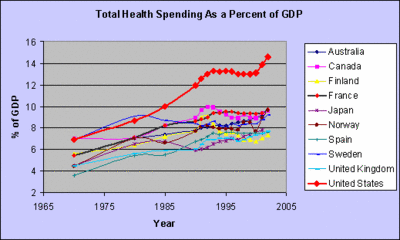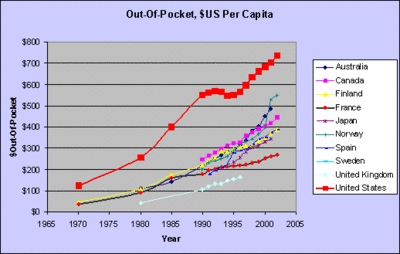Check out yesterday's post over at New Economist on US consumers feeling the squeeze from higher rates and then take a look at the excellent HSBC report: Interest Sting: US household interest payments are surging despite low long rates
This 10 page report contains 25 easy to read graphs and tables looking at the impact of interest rates from many different and complementary angles. This report is a model of behavior for how to approach a complex subject area in a way that promotes understanding and opens the door to further dialogue.
Here's what I found most attractive about the HSBC approach:
1. Most of the graphs are time series graphs that cover at least the last 7 years and many charts stretch back in time 25 years or more. The long time sweeps allows current behavior to be observed in context of past history.
2. Almost all of the graphs show only a single metric at a time making it possible to quicly digest and understand the behavior of that factor. The uncluttered look, clear lableing of the axes, easy to understand naming of the metric and suggestive title all combine to create a trend graph that can stand on its own without any other supporting text.
3. A smaller number show a pair of related variables to highlight relationships between the pair. These are also easy to read and digest and understand without supporting text.
4. Many of the factors plotted in this way are calculated values derrived from combining the raw numbers and these bring important and non obvious patterns out from hiding and into plain view. For example, check out chart 21, page 9 (mortgage debt as a % of disposable income) and chart 25, 10 (Consumer debt ex-mortgages as a % of disposable income)
5. While I am not a big fan of tables, even the tables in this report are easy to use and effective in conjunction with the extra text of the article.
6. The trend graphics are placed in close proximity to the explanatory text for easier reading.
The only thing missing is the click through link to the data set used to create these tables. For example, I would have loved to combine charts 21 and 25 to obtain a total interest chart as a percentage of disposable income. This metric was discussed in the report, but no chart provided.
While the authors of the report have their own views of what all these charts mean, the work they have done to lay out all the charts makes it possible for other observers to develop their own notions of what this complex situation means and compare their thoughts to those of the authors. All in all, an excellent example of how to use trend graphics to think deeply about an important topic.





